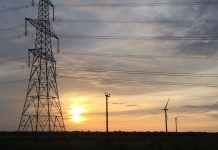National Grid ESO will go live with a new footroom service from 7 May, paying people to use more power over the summer or to stop exporting it.
While high levels of embedded solar PV have posed challenges for some years, this summer the ESO must manage exceptionally low demand on the transmission system due to the coronavirus lockdown.
The Optional Downward Flexibility Management (ODFM) service requires a minimum 1MW commitment (which can be aggregated if from the same grid supply point) and the ability to deliver for three hours.
Providers cannot be separately registered as balancing mechanism (BM) units, or otherwise active in the BM and they cannot be participating in or contracted to any other balancing/flexibility or related service during periods when the service is offered, per the draft guidance document.
Neither can they be signed up to a DNO’s active network management scheme or flexible connection.
However, aggregators and service providers will welcome Grid’s decision to treat ODFM as an ‘applicable balancing service’. That means, unlike the original Demand Turn Up service launched in 2016, providers will not be exposed to imbalance price risk.
Aggregators suggest that makes it far more likely that people will participate.
Draft details here.
Related stories:
As solar breaks records, National Grid mulls turning it off
National Grid: UK coal-free for 18 days
Coronavirus demand destruction gives National Grid another plate to spin
National Grid mulls footroom options as demand drops
Coronavirus and the power system: Keep calm and put the kettle on
Fintan Slye: Inertia has been taken for granted, it will become much more important
Demand turn up ‘not an enduring’ service, Grid to review
Demand turn up: What worked, what didn’t?
As solar generation makes history, National Grid starts to feel the burn
Click here to see if you qualify for a free subscription to the print magazine, or to renew.
Follow us at @EnergystMedia. For regular bulletins, sign up for the free newsletter.




What is needed is a national energy strategy to 2050. By then all our primary energy needs to be supplied as zero carbon electricity which is a massive increase from 161.2 TWh generated from renewables and nuclear in 2018 (BEIS data) to at least what we consumed that year which was 2,226 TWh and rising. There’s no way that renewables that generated 84.6 TWh in 2018 can be increased to 2,226 TWh over the next 30 years, so nuclear has to be a major part of zero carbon generation. The 8 Hinkley Point C type stations committed by the Government, will have a combined power of 25.6 GW but with 60% load capacity, they will produce 134.4 TWh which is still far short of what will be needed by 2050. The Government needs to orchestrate the conversion of our energy use over the next 30 years to zero carbon electricity at the same rate as the coming on stream of the zero carbon electricity to power it. Swapping the nuclear generation capacity at Sizewell C for renewables is just kicking the can down the road; we need both to meet net zero carbon emissions by 2050.